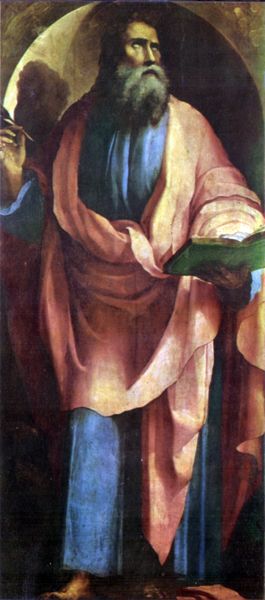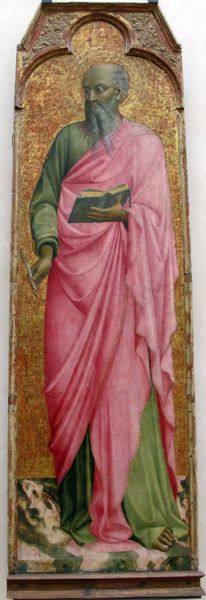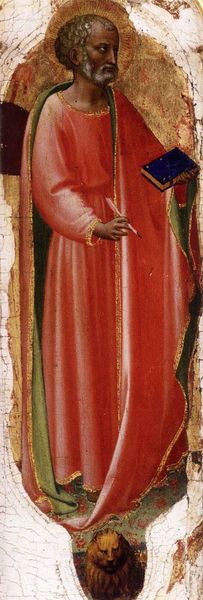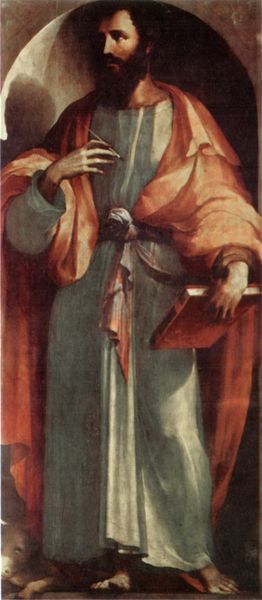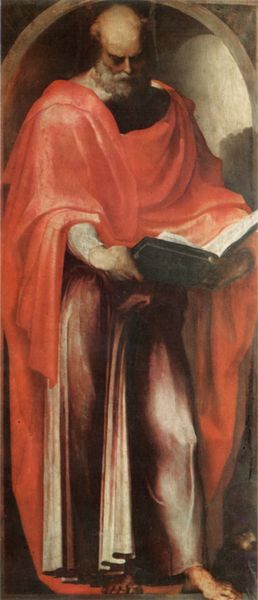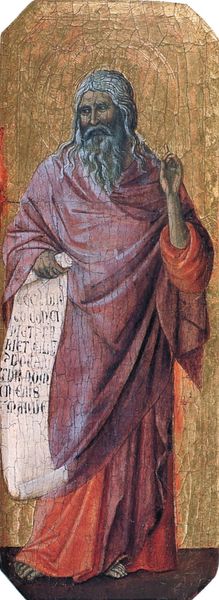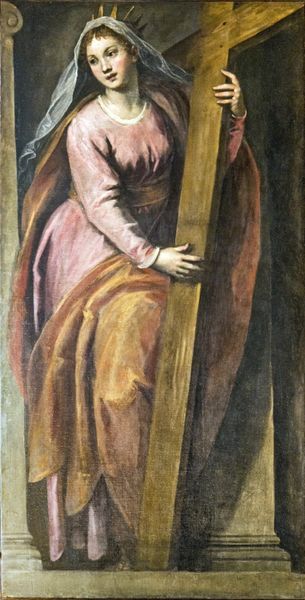
painting, fresco
#
portrait
#
painting
#
fresco
#
oil painting
#
roman-mythology
#
mythology
#
painting painterly
#
history-painting
#
italian-renaissance
Dimensions: 154 x 250 cm
Copyright: Public domain
Editor: So here we have Andrea del Castagno's "The Cuman Sibyl," a fresco from around 1450, currently housed in the Uffizi Gallery. It’s struck me as an oddly static image. How would you interpret this work? Curator: The Cuman Sibyl, beyond its representational subject, is fascinating from a materialist perspective. Consider the very act of fresco painting: pigments ground and mixed, applied to wet plaster, chemically binding to become part of the wall itself. It’s a process inextricably linked to the labor and resources available at the time. The use of fresco also roots it in a specific place, the physical wall—less an object of commerce than an integrated component of architectural space. Notice how the artist renders textures; it gives us clues about tool use and available materials. Editor: That’s a interesting take. So it is about understanding the physical work and the social background involved. But, doesn't the figure itself—this sibyl holding a book, gesturing upwards—convey something more than the materials themselves? Curator: It does, of course. But consider how that meaning is *constructed*. The pigments, for example: were they locally sourced? Imported at great cost, thus embedding the work within trade networks? Who would have been involved in procuring and preparing these materials? Examining these seemingly mundane aspects grounds the idealized figure in tangible economic realities, moving past pure iconology. The materiality helps us better grasp production process as part of social life, no? Editor: I see your point. It makes me consider that the artist’s technical choices were not purely aesthetic, that economics was one of its strong forces. Curator: Precisely. And how the choices—fresco, pigment, application—limit but enable the production of symbolic representation. Editor: I hadn't thought about it that way before. Thanks for opening up a new lens for understanding it. Curator: Indeed, and I find myself appreciating Castagno’s awareness of fresco medium in constructing durable art that serves to reflect his own contemporary society.
Comments
No comments
Be the first to comment and join the conversation on the ultimate creative platform.


